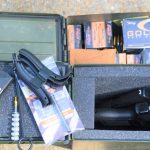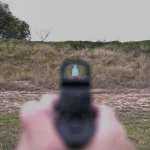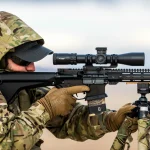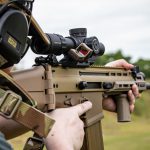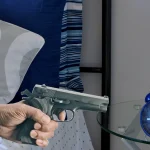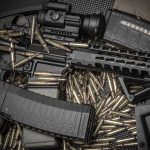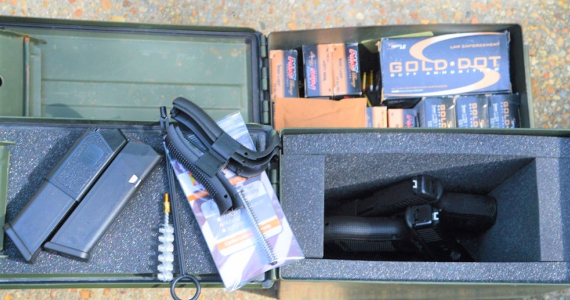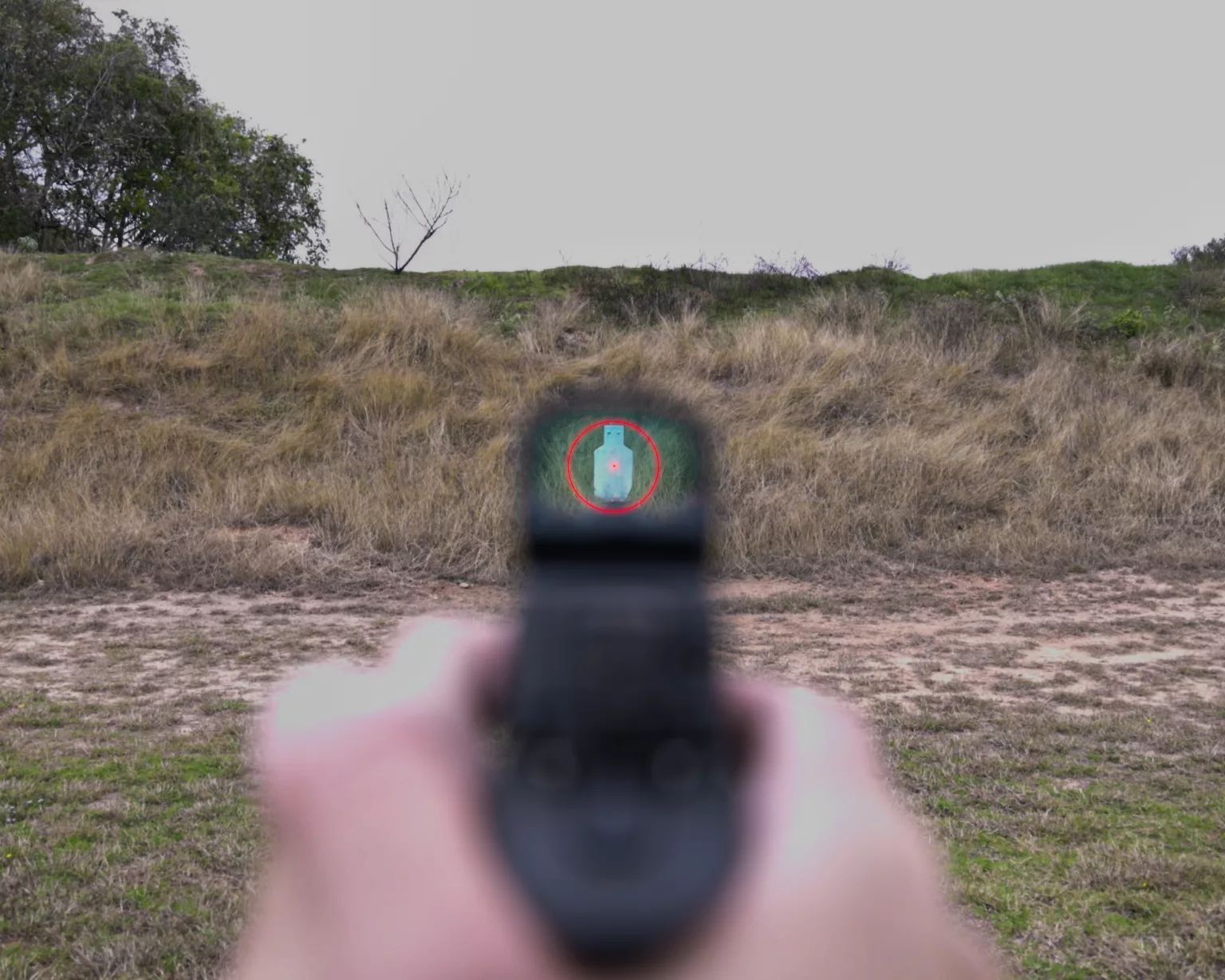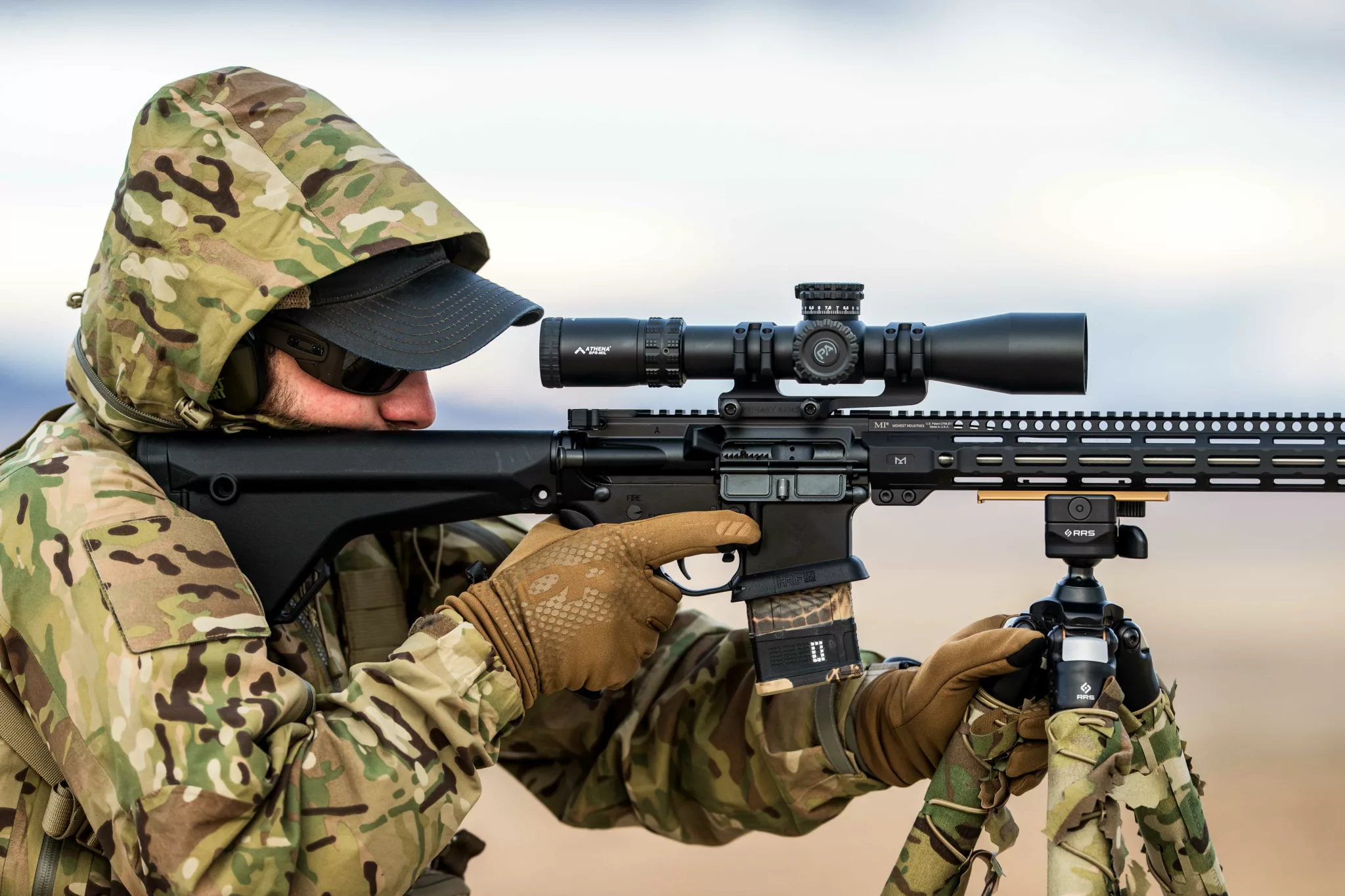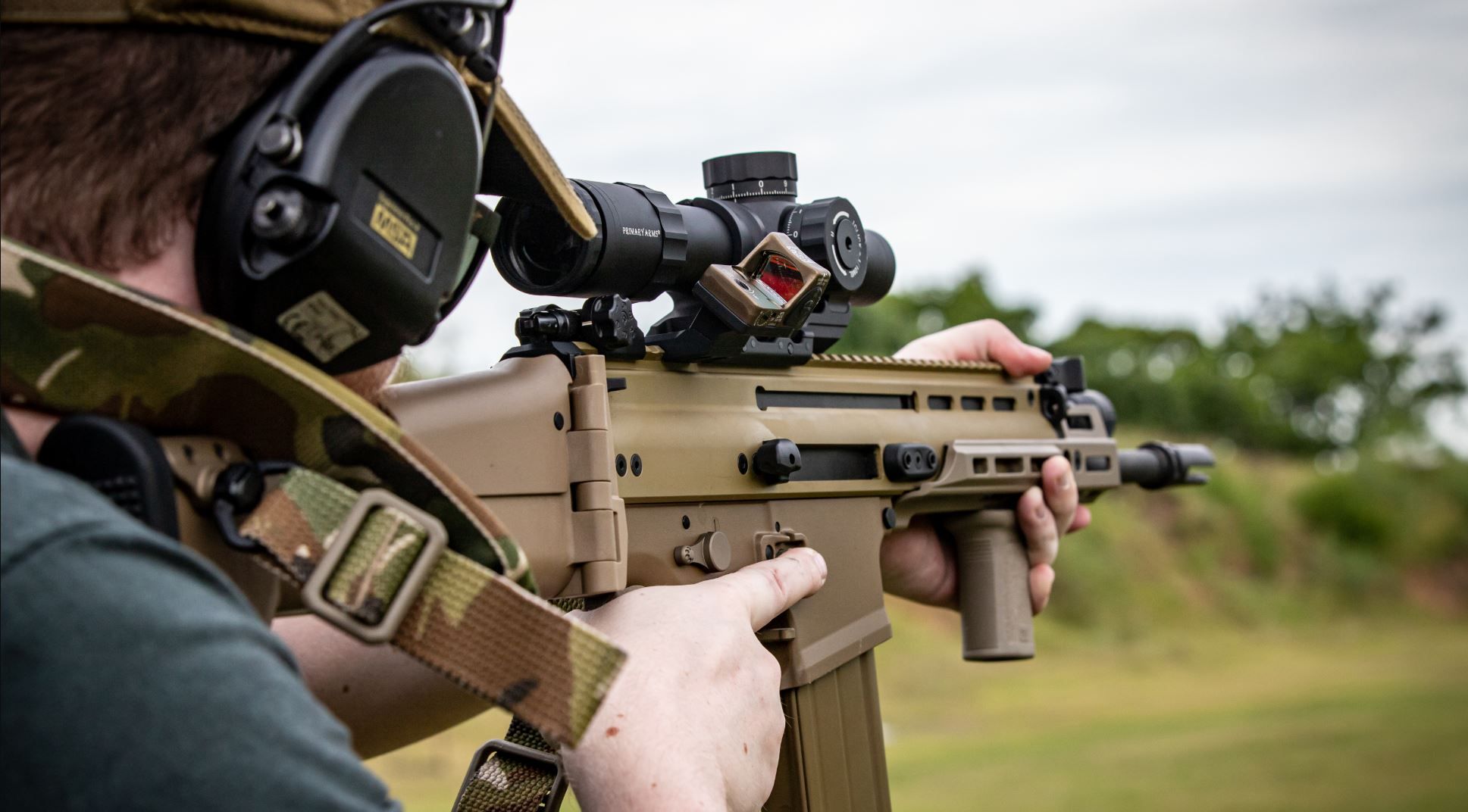AR-15s are great! However, there are endless accessories that can lead the uninitiated down a deep rabbit hole. This guide for the new AR owner is designed to help them map out a course for the journey.
Last month, I asked folks on Twitter what topics they would like me to write blog posts on. One suggestion that came up was something for new AR owners that covers what’s needed versus what’s cool. I briefly touched on this topic in a fairly popular post which provides directed advice for new or soon to be armed self defenders. However, I think revisiting this topic with a bit more depth has its merits. So here we are.
Sighting System
Many AR-15s, in fact many rifles, sold today do not include any sights whatsoever. I suspect this might be due to manufacturers expecting consumers will attach an optic of their choosing and the exclusion of traditional sights allows them to keep costs down and pricing competitive. Regardless of the reason, a sighting system is essential in order to be able to aim and shoot the rifle accurately.
There are a few schools of thought about what sighting system to use. One school of thought firmly believes in starting out with a set of iron sights and avoiding others until proficiency with the rifle has been reached. Another school of thought will suggest starting with an optic and skipping the irons altogether. Yet another school of thought dictates that back up iron sights, often referred to as BUIS, are not optional if an optic is used. Frankly I think each approach has its merits, but it comes down to what one wants to do with their rifle.
Most folks buy their AR-15 with a primary application in mind, but not everyone does. Let’s talk about some options.
AR-15 iron sights are a viable option that can run as little as $90 or as much as $330 depending on features and manufacturing. Skilled folks can use iron sights to accurately engage targets from close range to long respectable distances. However, they can be difficult to use by folks with less than perfect vision. While they are a tried and true reliable sighting system, I tend to think they are a byproduct of an era where optics were prohibitively expensive and not as reliable as today. Additionally, I think they have a steeper learning curve than modern optics. For those reasons along with my aging eyes, iron sights are not where I would start for a primary sighting system. Rather, they are something I would suggest keeping in mind as an alternative backup sighting system option.
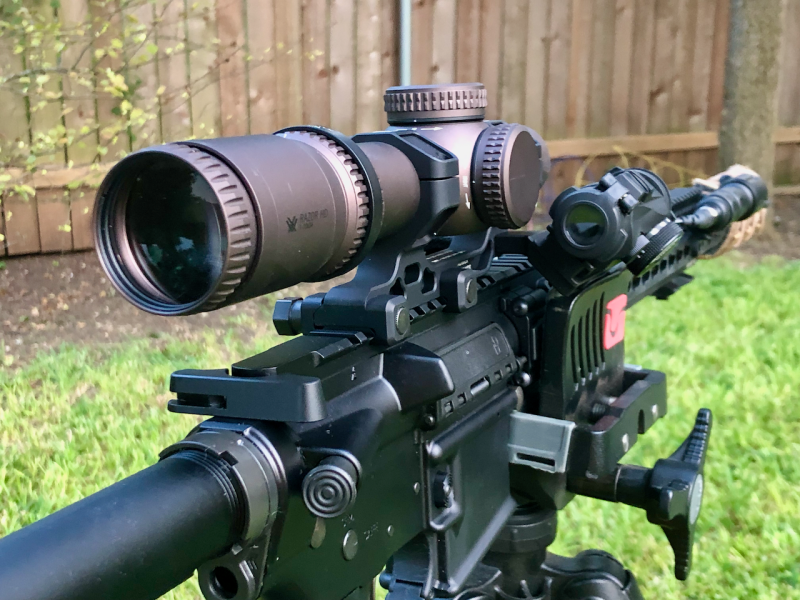
Optics come in lots of different forms and sizes including, but not limited to magnified rifle scopes, low powered variable optics (LPVO), red dot sights (RDS), prism sights, and holographic sights. These options are going to be a lot more application specific and can get very expensive quickly. However with few exceptions, when it comes to the AR-15 we are generally talking about choosing between a LPVO, a non-magnified optic like an RDS, a non-variable magnified optic, or a combination of those. I wrote another post that covered the LPVO vs RDS debate at length so I won’t rehash that discussion here, but I will briefly summarize it. If the AR-15 was purchased with home defense in mind, then a RDS or a non-magnified prism or holographic sight will be the best bet where prism and holographic sights might work better for folks with astigmatism. For applications where engaging targets at longer distances is very likely, then an LPVO makes a lot more sense although a non-magnified optic with a flip up magnifier is a viable alternative.
My recommendation for new owners who are unsure of a primary application or where to start is to begin with a value priced LPVO like the Vortex Strike Eagle which I have reviewed previously here.
Whatever one decides to go with, don’t forget to sight in (or zero) the irons or optics. For more information on zero distances, take a peak at this post over here.
Confirm Reliable Operation
Given an AR-15 that has been sighted in and lubricated, the very next thing I strongly suggest is to purchase a few magazines, a fair amount of ammunition, and then head off to the range to confirm reliable operation. How many magazines? At least a couple for this initial trip to the range. How much ammo? Depends on the cartridge and feasibility given the current ammunition market conditions. For .223 Remington or 5.56 NATO, I’d suggest a minimum of 100 rounds but would prefer somewhere in the neighborhood of 500 rounds.
The primary point of this exercise is to make sure the AR-15 goes bang and cycles reliably. If one finds themselves having to stop and fiddle with the rifle to chamber a round because it’s not feeding or ejecting properly, then it’s time to stop, call it a day, and contact the manufacturer to arrange for a warranty repair.
The secondary goal of this exercise is to check for proper ejection. If one finds spent casings are being ejected in front of them, then that could be a sign of over gassing. If one finds the spent casings are being ejected behind them, then that could be a sign of short stroking. Ideally a properly gassed AR-15 should be ejecting spent brass casings to the right side between the 3:00 to 4:30 direction. Even if the rifle experienced no malfunctions, consistent ejection outside of that ideal window is a potential sign of future problems. So again, contact the manufacturer to arrange for a warranty repair.
If one ends up having to send the rifle back for warranty work, then plan on repeating this exercise until happy with the results.
Get a Sling
Unless the purpose of the AR is to be a plinker or a recreational range toy, then a sling is a must. I can’t remember who said this, but this saying has stuck with me for a long time: A sling is to a rifle as a holster is to a pistol. A sling provides retention and allows us to go hands free. It also provides a mechanism on which to stabilize the rifle when shooting from any position. There are plenty of great slings to be found. I tend to rely on two point adjustable slings from Magpul or Blue Force Gear.
Most AR-15s will include a quick detach (QD) sling attachment point in the stock or just behind the lower receiver. This will generally work for attaching a single point sling. In many cases, AR-15s with modern hand guard rails will also include one or two QD attachment points which is necessary in order to attach a two point sling. However, this isn’t always the case, but it can be remedied by picking up a QD mount that will work for the hand guards attachment system.
Training and Practice
I’m going to assume folks who are still reading picked up their AR-15 for more than recreational target shooting. I firmly believe the next most important investment is in training and practice, especially for folks who are intending to use their AR-15 as a defensive tool. Self administered training might be good enough for folks who intend to engage in hunting or long distance shooting and opted for an AR-15 with a specialty cartridge. However, the value of receiving quality instruction from a qualified instructor can’t be understated for folks who intend to use the AR-15 defensively or competitively.
While investing time and money into training and practice, this is a good time to research quality ammunition for specific applications and acquire additional magazines in order to have magazines dedicated for practice and actual application use. I’ve covered magazine inventory in detail in this prior post.
Initial Accessories
We are now at a point to start considering some additional attachments to optimize the AR-15 configuration for specific applications. Let’s consider them.
For the home defense AR-15, a weapon mounted light (WML) should be the top priority. This is an essential accessory needed in order to properly identify a target in a defensive encounter that occurs in low light conditions. Yes, turning on the lights is great and a handheld flashlight is invaluable as well. However, there is no guarantee that house lights or a flashlight will be available and accessible during a defensive encounter. My favorite WML is currently the Modlite Systems OKW paired with a Modlite Systems Modbutton which allows one to activate the light by applying pressure without having to break the support hand grip from the hand guard. There are some other similar solutions from Streamlight and SureFire that also work well without having to shell out as much cash.
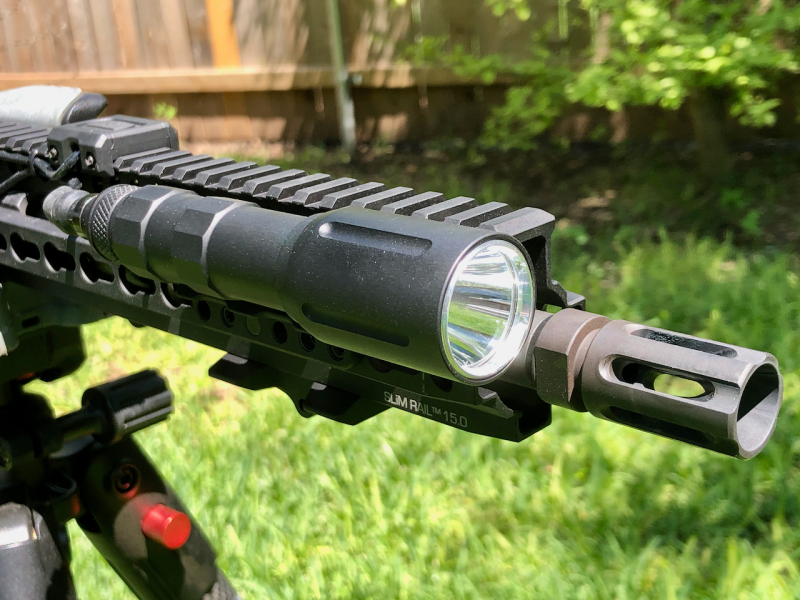
Home defense and competitive match AR-15s can also benefit from a hand stop. These devices serve as a tactile reference that allows one to grip the hand guard with the support hand at the same optimal position every time. There are quite a few different designs that work well and some designs can double as a barricade stop. My personal favorite hand stop is the Mod2 from SLR Rifleworks. It’s a minimalist design that doesn’t add a lot of weight.
Some folks may also want to consider adding a bipod. These can be necessary for some competitive applications or when shooting at longer distance targets from the prone position. I don’t have a strong opinion on these as I tend to shoot from a pack instead. Nevertheless, it’s an accessory to consider.
Low Light Training and Practice
This might seem obvious to some, but practicing in low light or getting low light specific training is something that a lot of folks I’ve met have never done. This is especially true for folks who don’t live in rural areas and spend a lot of time with their AR in low light conditions. I’ve already emphasized the value of training for self defense applications. This emphasis also applies to low light shooting. Learning what that is like during an encounter is the worst possible situation to figure out the differences between shooting in good light versus low light.
Suppressors and Night Vision
Understandably, suppressors and night vision have a high barrier to entry. However, I think they are important accessories that pair well with the AR-15.
Suppressors are hearing protection for every one. They also significantly reduce flash signature which can be very beneficial in low light shooting scenarios. I won’t get into them in length there as I’ve covered their impact on hearing safety and making shooting more enjoyable before and I’ve also dove into the hoops required to own one as well. Regardless of the application, I strongly encourage folks to own a suppressor if they reside in a jurisdiction that allows them to possess one and the means to do so.
Night vision is something I’m starting to dip my toes into so I’ll refrain from making suggestions. I’ll just mention that I see a lot of value in the ability to use a firearm in low light or no light conditions without having to rely on an artificial light source for positive target identification in applications such as night hunting or for defense in extremely terrible circumstances. Unfortunately, I’m finding night vision to be a deep and expensive rabbit hole. That said I figured it would be worthwhile to put it y’all’s radar of things to consider for the AR-15.
I fully expect some readers to point out that I’ve missed something or that some of the accessories and investments I’ve mentioned are not necessary. That’s quite alright. My intention here is to lay out what my prioritized list of investments are. They are merely a suggestion that some folks might find helpful.

